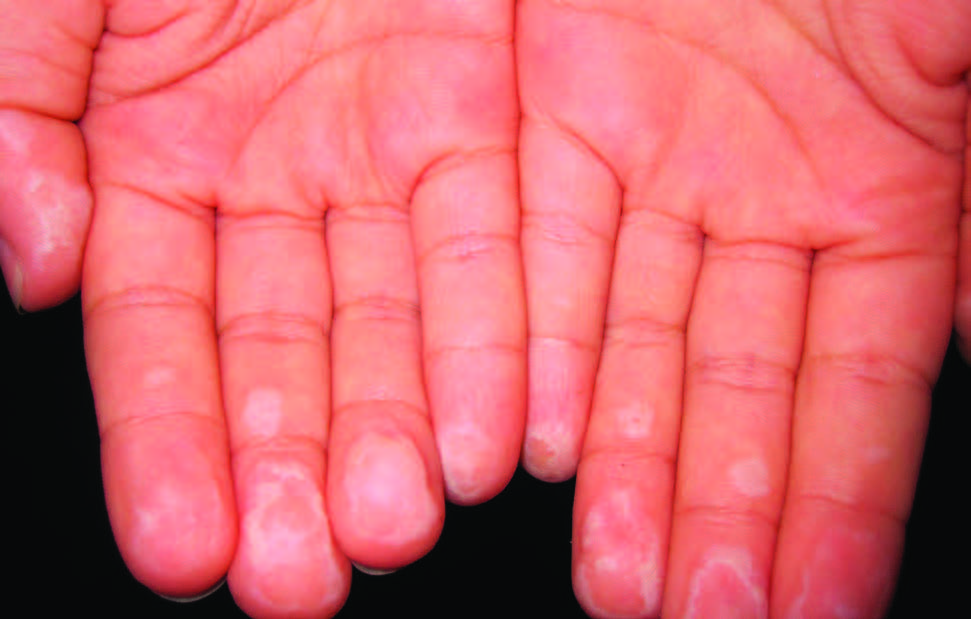An 8 year-old boy, previously healthy, presented on the emergency department, during the summer, with air-filled blisters on the volar aspect of the extremities of fingers on the hands (Fig. 1). On follow-up as an outpatient, he showed resolution of the first lesions but with various relapses associated with contact with water for a long period of time, showing posterior peeling of the skin and posterior resolution. What is your diagnosis?

Figure 1: Air-filled blisters on the volar aspect of the extremities of fingers sugestive of keratolysis exfoliativa.
The diagnosis of keratolysis exfoliativa was established and treatment was conducted with emollient cream.
Keratolysis exfoliativa, also known as dyshidrosis lamelosa sicca, was first described by Caryon in 1903.1
This dermatosis affects the palmoplantar skin, most frequently the volar aspects of the fingers. It is characterized by annular erythema with air-filled bullae that rupture with lamellar peeling, because of the keratolysis of stratum corneum without cell infiltration. Slight pruritus or a burning sensation may precede the peeling, as well as pain in peeled areas.2,3 Warm weather, water contact, friction or palmoplantar hyperhidrosis can be associated with its appearance.2
Differential diagnoses with dyshidrotic eczema, fungal infections, acral peeling skin syndrome and epidermolysis bullosa simplex located of the hands and feet may be considered. The lesions of queratolysis exfoliativa can last a few days and have a spontaneous resolution.2,3
No effective treatments have been described yet, but some patients show a favourable response to emollient creams.2,3
We highlight the importance of the recognition of this dermatosis, which is rarely documented despite is thought to be quite common.3















